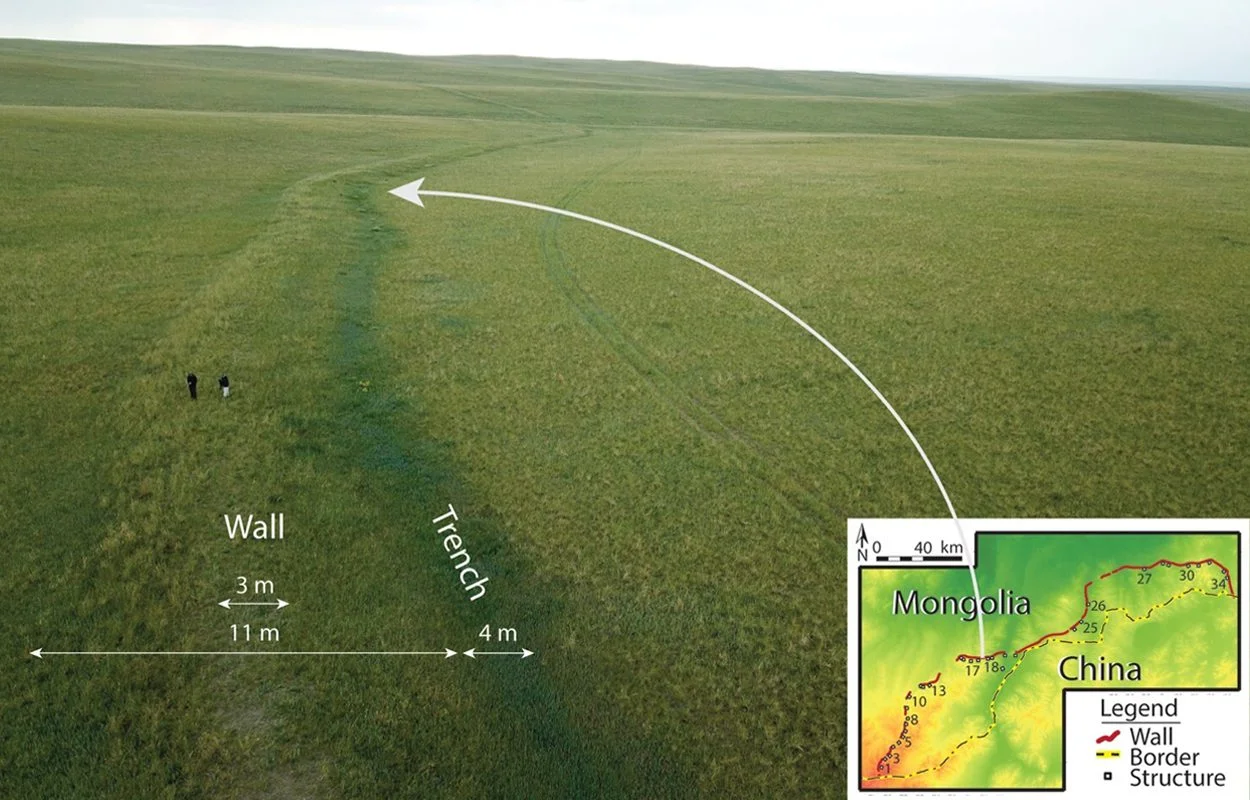A new study by The Hebrew University of Jerusalem, working in collaboration with the National University of Mongolia, has revealed new insights regarding the Mongolian Arc, a 405 km long wall system located in Eastern Mongolia.
The Mongolian Arc consists of an earthen wall, a trench, and numerous structures, which is part of a much larger system of walls in Mongolia and China built between the 11th and 13th centuries AD.
The study, published in the Journal of Field Archaeology, involved a comprehensive approach combining remote sensing data collection, archaeological field surveys, and analysis through geographic information systems (GIS).
This enabled the study authors to create the first precise mapping of the complete scope of the Mongolian Arc, encompassing details of its orientation and variations in width. In addition, they were able to trace the complete wall line and identify 34 structures associated with it.
“Understanding the significance of the Mongolian Arc unlocks profound insights into medieval wall systems, raising pertinent questions about the motives, functionality, and enduring consequences of such colossal constructions,” said Prof. Gideon Shelach-Lavi.
Upon comparing the Mongol Arc with another wall section to the north, the team observed that the Arc exhibits structures in closer proximity to each other, averaging around 8 kilometres apart, whereas the other wall’s structures are situated at distances ranging from 20 to 30 kilometres.
Also, another major difference between the Arc and the north section of wall is the large gaps found in the Arc that range between 3 and 8 km’s, with some around 15 km’s.
Through the examination of historical documents from the official records of the Liao and Jin dynasties, it has been suggested that the Mongal Arc segment was hurriedly constructed in AD 1200 to serve a defensive measure against imminent Mongol invasions.
However, the lack of visibility and communication between each structure contradicts the Arc effectively serving a military function. Instead, the study hypothesises that the Arc was built to regulate the movement of both people and livestock, while also serving an administrative function for tax collection.
The study authors said: “We are currently making plans for the next stage of field research, which will build upon the results reported here and aims to test some of our hypotheses. During the upcoming field season, our objectives include conducting test excavations at two of the structures and the wall line itself. Through these excavations, we hope to gain a better understanding of their features and structures, determine the construction dates and duration of use, and shed light on the activities of the people.”
Header Image Credit : The Hebrew University of Jerusalem
Please take a second to click on the advert below. That one click helps to fund our journalism and enables us to continue providing articles on our platform completely FREE.





